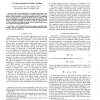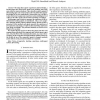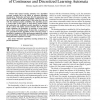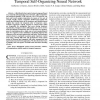TSMC
2002
13 years 11 months ago
2002
Imitation is a powerful mechanism whereby knowledge may be transferred between agents (both biological and artificial). Key problems on the topic of imitation have emerged in vario...
TSMC
2002
13 years 11 months ago
2002
TSMC
2002
13 years 11 months ago
2002
The Al-Alaoui algorithm is a weighted mean-square error (MSE) approach to pattern recognition. It employs cloning of the erroneously classified samples to increase the population o...
TSMC
2002
13 years 11 months ago
2002
By using other agents' experiences and knowledge, a learning agent may learn faster, make fewer mistakes, and create some rules for unseen situations. These benefits would be ...
TSMC
2002
13 years 11 months ago
2002
There are a lot of industrial applications that can be solved competitively by hard computing, while still requiring the tolerance for imprecision and uncertainty that can be explo...
TSMC
2002
13 years 11 months ago
2002
The fastest learning automata (LA) algorithms currently available fall in the family of estimator algorithms introduced by Thathachar and Sastry [24]. The pioneering work of these ...
TSMC
2002
13 years 11 months ago
2002
A distributed robot control system is proposed based on a temporal self-organizing neural network, called competitive and temporal Hebbian (CTH) network. The CTH network can learn ...
TSMC
2002
13 years 11 months ago
2002
The construction of interpretable Takagi




